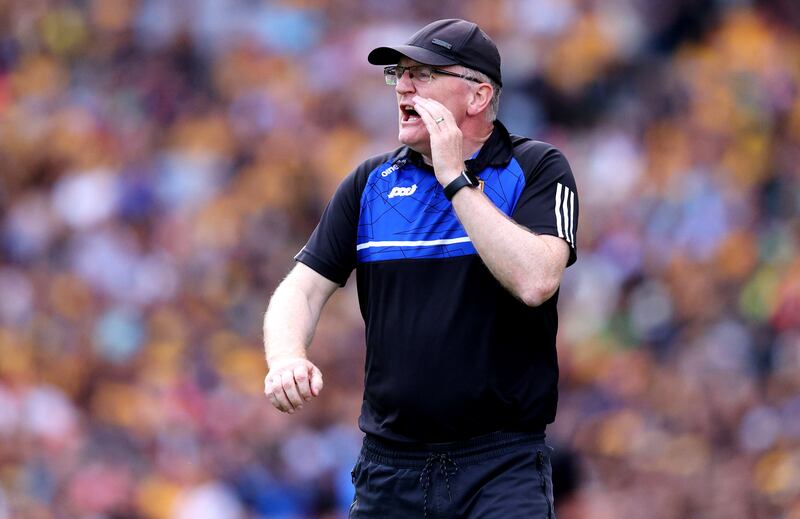In the GAA, next year is never bound by the calendar. It starts the day after you lose. Will the manager stay? How many players will walk? Which ones might not be kept? What happened? Why? The thousand-yard stare of the off-season requires particular kind of stamina.
In professional leagues, where seasons turn on weekly engagements, on a nine-month carousel, there is a huge premium on not stewing, on anything. Win or lose, the last match must be consumed quickly, like a piece of fruit: eat the flesh, bin the pips.
The flip side of the GAA’s peculiar relationship with time is that last year survives like plastic. In the provincial system, repeat matchups come along every year, and in the new structures there is an increased chance of teams meeting twice in the same summer. Every encounter feeds a bulging dossier of Things-Not-To-Forget.
For Galway and Clare, it was obvious that they couldn’t think of this weekend without remembering last year. Clare had been gutted by Kilkenny 12 months ago, Galway had hustled Limerick until the final whistle, and that was the context for their thinking. What worked? What didn’t? We can’t make the same mistakes again.
Malachy Clerkin: The GAA should make more of St Patrick’s Day - and more of its intercounty stars
Shefflin trying to devise a way for Galway to halt Limerick juggernaut
Munster CEO defends broadcast coverage of province’s hurling championship
Sports Review 2023: Murphy’s incredible reflex save showed hurling’s facility for the impossible
After the game on Sunday Brian Lohan was explicit in his references to last year’s semi-final, and how it had framed their approach: “I suppose last year, we felt we played the game on their terms. They had the extra defender back, and we didn’t make use of the ball the way we might, and left a huge amount of space. We didn’t want to be out of the game at half-time again, conceding goals early on.”

Clare’s excess of caution in the first half was rooted in the trauma of that experience. A year ago, they trailed by 14 points at half-time. But if they needed to learn from the missteps of a year ago, was their greatest mistake to think too much about it?
John Conlon was available this time; they weren’t as emotionally or physically drained by the Munster championship, or the All-Ireland quarter-final, as they had been a year ago. Against Dublin, they used six players who had played no part in last year’s quarter-final against Wexford. The panel seemed to be deeper, they appeared to be in a better place.
And yet, when Sunday came, they projected a different image. They didn’t look like the only team to have beaten Limerick in the championship in the last four years, or the only team to have drawn twice with the All-Ireland champions during that time. The brazen fearlessness that fuelled all of those performances was put in the fridge until the second half. Before the plane even left the runway they were in the brace position.
[ Clare and Galway demonstrate the dangers of overthinkingOpens in new window ]
Lohan spoke about not wanting to play the game on Kilkenny’s terms – as he felt they had done a year ago – and Henry Shefflin made a similar remark on Saturday. “We spoke about playing the game on our terms,” he said. That is hurling’s great conflict now: which team can impose their shape and, by extension, their collective will.
“It’s nearly the more ignorant teams that are winning,” Richie Hogan a couple of years ago. “The team that sticks to their own plan, and are more forceful with their own plan.” Limerick are masters of that now.
A big challenge for teams against the All-Ireland champions is creating shooting opportunities inside their 45. A year ago, Galway were content to shoot from outside, because that was the path of least resistance. Limerick would know the percentages on that kind of game and it is a risk they are prepared to absorb.
Reflecting on last year, Galway had clearly come to the conclusion that they weren’t going to beat Limerick from distance, and the really impressive element of their performance in the opening half an hour on Saturday was how many scoring chances they created inside the Limerick 45.
They scored one goal, but could easily have had three. Conor Whelan was able to get his hands on the ball inside the Limerick 20, Kevin Cooney and Brian Concannon scored from the narrow peninsula of space that exists between the Limerick full-back line and half-back line, Evan Niland was handed a selection of frees from no more than middle distances, and Limerick were dealing with more invasiveness than usual.
What Galway failed to do was cope with Limerick’s inevitable, utterly predictable response. When the middle third turned into a riot of body hits and swarm tackling after half-time, Galway didn’t have any means to change the terms of engagement, or beat Limerick at their own game. None of that is simple.
Galway, though, had 12 months to plan for this. They weren’t guaranteed to meet Limerick again in this year’s championship, but for a team like Galway success is defined by winning the All-Ireland, and it would have been a long shot to reach that goal without encountering the fiery breath of the Green Dragon. During the long winter and spring, building a team to beat Limerick would have been Shefflin’s mission.
“That’s the bar,” said Shefflin. “If you’re not going to get up there you’re not going to pass it out.”
Next year will feel like a million miles away, but Clare and Galway won’t get through the off-season without reaching some kind of resolution about this weekend’s failures. That is how the GAA works. In the championship, outcomes are never transient or disposable. Next year comes and last year is still trying to hold it hostage.















